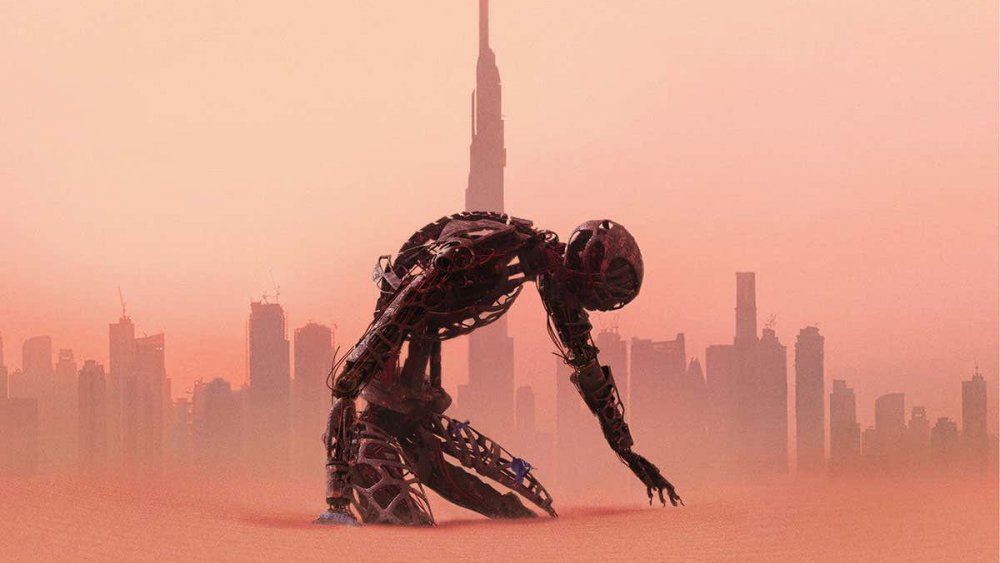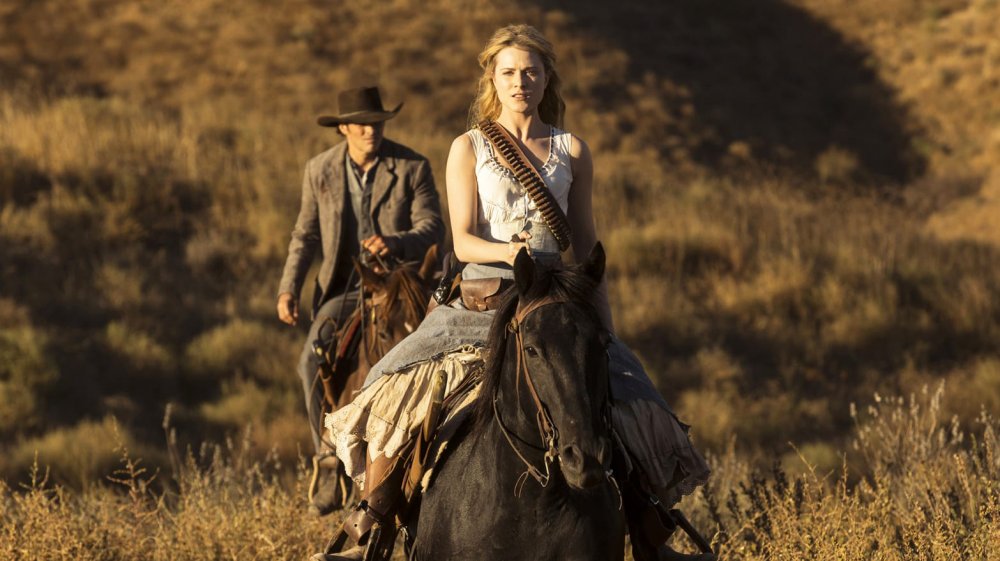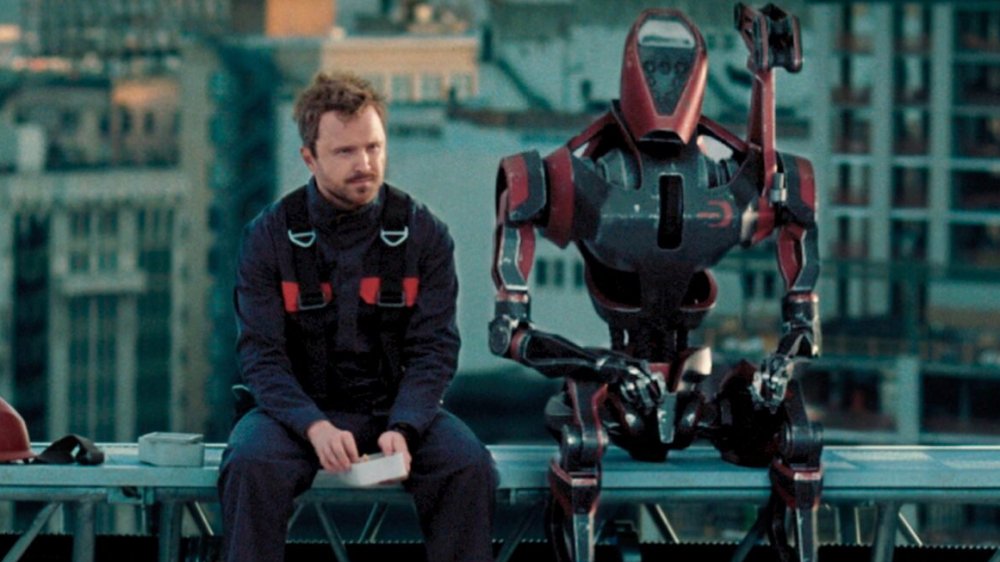The Inspiration Behind Westworld's Aesthetic - Exclusive
Take one look at HBO's Emmy-winning series Westworld, and you'll agree that each episode is visually stunning from its first to final frame. This has a lot to do with the cinematography — the creation of on-screen images using lighting, framing, composition, and other techniques. For the past two seasons of Westworld, John Grillo has been one of the main cinematographers working on the series, bringing an experienced eye to the set. (He's worked on such high-profile films as Ali, Bad Boys II, and Argo, along with TV series like Teen Wolf and Preacher.)
Based on the 1973 Michael Crichton movie of the same name, Westworld is a futuristic science fiction drama that stars Evan Rachel Wood, Thandie Newton, Jeffrey Wright, Ed Harris, Tessa Thompson, Luke Hemsworth, and season 3 newcomer Aaron Paul, among others. Westworld's first two seasons largely took place in a theme park based on the American Old West, populated by androids who cater to wealthy guests' various desires. The third season, which premiered in March 2020, has a wildly different storyline — and a fresh new look — focusing on the now-sentient beings integrating themselves into the real world.
In an exclusive interview with Looper, Grillo talked about what movies he watched to get his creative juices flowing and what it's like to shoot a futurist sci-fi series on old-school 35mm film, revealing in the process the inspiration behind Westworld's aesthetic.
Bringing the past into the present on Westworld
While the original 1973 Westworld movie is now dated, the HBO series' co-creators Jonathan Nolan and Lisa Joy extracted the core concept — a futuristic world intersecting with a re-imagined past — and expanded upon it.
"They latched onto the theme to expound technology and how it has infiltrated our lives to an even greater degree now," Grillo says. "[Westworld is] a very iconic '70s sci-fi film, in a class with The Omega Man and Soylent Green and all those films that were feeding into a certain paranoia at the time — the Vietnam War and encroaching technology. When I first learned I was going to do Westworld, I thought I should re-watch the film. And it's definitely interesting, but there's nothing in the look that I could bring to what I do."
Instead, Grillo turned to modern Westerns like 1993's Tombstone and 2007's 3:10 to Yuma for inspiration when he joined season 2 of Westworld.
"I had a long list of Westerns that I looked at," he says. "But when I started, they had already shot a season, so I already had material and had actually watched the show when it came out and liked it. I already had a backlog in my head of what the show looked like. So, other than watching some Westerns for other references, like framing, I already had a feel for the show."
The evolution of the real world within Westworld
When Westworld season 3 rolled around, the series had a very different look and feel from the previous seasons, mainly taking place in "the real world" in the highly futuristic mid-21st century. Grillo sees this shift as more of an evolution than anything else.
"We knew that this was coming by the end of the second season," he notes. "It was very interesting to see the characters in these new surroundings. When you get involved in a show like this, you not only help create the show, but you also become a fan of the show. You are invested in the characters, and sometimes you're on set shooting and say, 'Dolores would never do that.' You're always wondering what they're thinking, and how to visually interpret what they're going through internally."
Despite the futuristic premise, the series exclusively uses 35mm film when shooting — something Grillo thought might get upgraded to digital when, for all intents and purposes, the series left the American Old West behind. But that idea was quickly shot down.
"I thought using 35mm was great when we were shooting a Western, which was from anther time even though we were really in the future," Grillo explains. "So in the back of my head for season 3, because we were moving into the modern world, I thought we might go digital, shooting in 4K or 6K. But it never got past my own head. Jonathan would never go for it. So we stuck with film. We're still telling the same story, we're just in a different place."
Westworld is currently airing its third season on HBO on Sundays at 9 PM ET.


